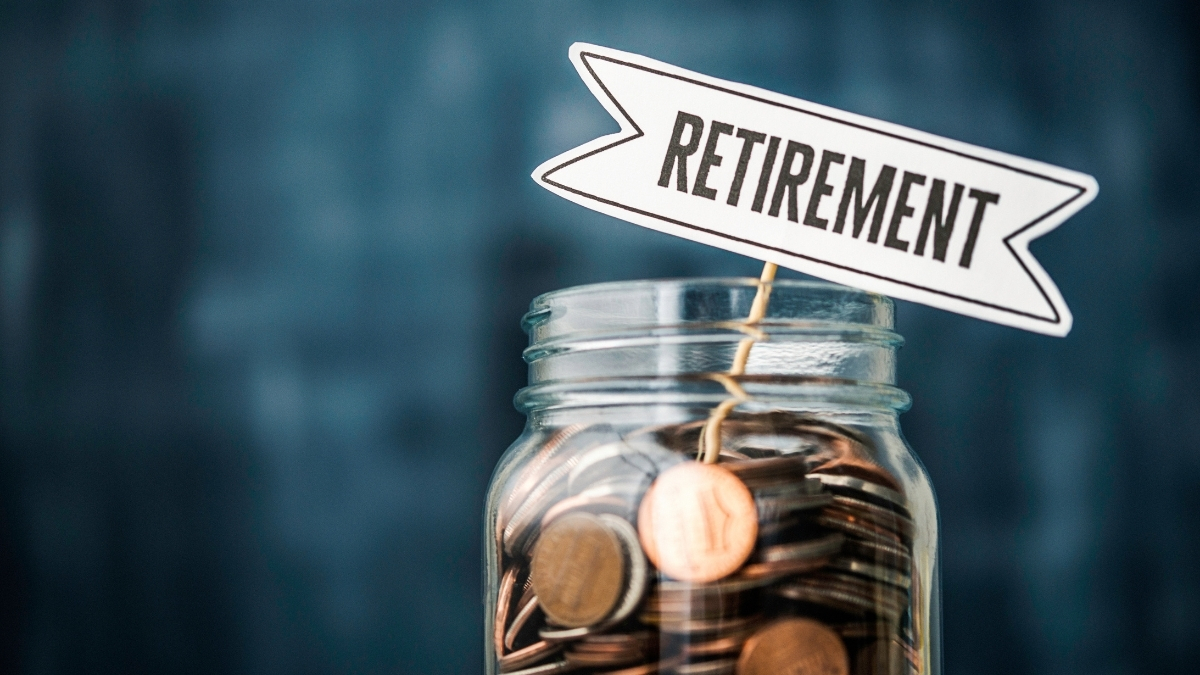Hey there, Hustlers! Tax season might feel like a financial maze, but here’s the truth: understanding the difference between RRSP contributions and government rebates like the Grocery Rebate could save you thousands. While everyone’s talking about quick government handouts, the real wealth-building power lies in strategic RRSP contributions that compound over decades.
🔑 KEY TAKEAWAY RRSPs offer immediate tax deductions up to $32,490 in 2025 plus decades of tax-deferred growth, while the Grocery Rebate was a one-time $467 maximum payment in 2023. For long-term wealth building, maxing your RRSP contribution creates exponentially more value than waiting for government rebates.
- RRSP Contribution Limits 2025: The $32,490 Opportunity
- Grocery Rebate Reality Check: One-Time vs Long-Term
- Real Tax Savings Breakdown: RRSP vs Government Benefits
- Maximum RRSP Tax Benefits Calculator
- GST/HST Credit: Your Ongoing Government Benefit
- Strategic Tax Planning: Combining RRSP and Credits
- Common Tax Mistakes That Cost Thousands
- RRSP Contribution Deadlines and Penalties
- Advanced RRSP Strategies for Maximum Growth
- Frequently Asked Questions
RRSP Contribution Limits 2025: The $32,490 Opportunity
The RRSP dollar limit for 2025 is $32,490, representing the maximum you can contribute to reduce your taxable income. This limit applies to the lesser of 18% of your previous year’s earned income or the maximum amount set by the Canada Revenue Agency.
How RRSP Contribution Limits Work
Your actual RRSP contribution room depends on several factors:
| Income Level | 18% Calculation | Maximum Contribution |
|---|---|---|
| $50,000 | $9,000 | $9,000 |
| $100,000 | $18,000 | $18,000 |
| $180,500+ | $32,490 | $32,490 |
Historical RRSP Limits Comparison
| Year | RRSP Limit | Annual Increase |
|---|---|---|
| 2025 | $32,490 | +$930 |
| 2024 | $31,560 | +$780 |
| 2023 | $30,780 | +$1,570 |
| 2022 | $29,210 | +$1,380 |
March 3, 2025, is the deadline for contributing to an RRSP for the 2024 tax year. Miss this deadline, and you lose the tax deduction opportunity for that year, though you can carry forward unused contribution room indefinitely.
Pension Adjustment Impact
If you participate in an employer pension plan, your RRSP contribution room is reduced by a pension adjustment. This ensures you don’t get double tax benefits from both your workplace pension and RRSP contributions.
Grocery Rebate Reality Check: One-Time vs Long-Term
Let’s clear up the confusion: The Grocery rebate will be issued to eligible Canadians on July 5th, 2023. This was a one-time payment that’s already been distributed. There’s no Grocery Rebate for 2025.
What the Grocery Rebate Actually Was
The Grocery Rebate was equivalent to double the GST/HST credit amount you received for January 2023. Maximum payments were:
- Couples with two children: Up to $467
- Single individuals: Up to $234
- Seniors: Up to $225 on average
Compare this to maxing out your RRSP: a $32,490 contribution in the 30% tax bracket saves you $9,747 immediately, plus decades of tax-deferred growth.
Why People Still Ask About Grocery Rebate 2025
The confusion stems from ongoing GST/HST credit payments, which many Canadians mistakenly call “grocery rebates.” The actual ongoing benefit is the GST/HST credit, which we’ll cover next.
GST/HST Credit: Your Ongoing Government Benefit
Unlike the one-time Grocery Rebate, the GST/HST credit is a tax-free quarterly payment that helps individuals and families with low and modest incomes offset the GST or HST that they pay.
2025 GST/HST Credit Amounts
For the July 2025 to June 2026 payment period, the base credit is $349. Here’s how payments are calculated:
| Family Situation | Annual Credit | Quarterly Payment |
|---|---|---|
| Single person | Up to $349 | Up to $87.25 |
| Married couple | Up to $698 | Up to $174.50 |
| Each child | Additional $184 | Additional $46 |
| Single parent (first child) | Additional $349 | Additional $87.25 |
Income Thresholds for GST/HST Credit
The credit begins to reduce when adjusted family net income exceeds $45,521. For single individuals, additional credit calculations start when income exceeds $11,337.
GST/HST Credit Payment Schedule 2025
The Canada Revenue Agency usually send the GST/HST credit payments on the fifth day of July, October, January, and April.
- July 5, 2025
- October 5, 2025
- January 5, 2026
- April 5, 2026
Real Tax Savings Breakdown: RRSP vs Government Benefits
Let’s crunch the real numbers that matter to your wallet. Here’s how RRSP contributions stack up against government benefits across different income levels:
Scenario 1: $60,000 Income Earner
RRSP Contribution Impact:
- Maximum contribution: $10,800 (18% of $60,000)
- Tax savings (25% bracket): $2,700
- Future value after 25 years at 6% growth: $58,275
Government Benefits:
- GST/HST credit (single): $349 annually
- 25-year total: $8,725 (no growth, inflation-adjusted)
RRSP wins by $49,550 over 25 years
Scenario 2: $100,000 Income Earner
RRSP Contribution Impact:
- Maximum contribution: $18,000
- Tax savings (30% bracket): $5,400
- Future value after 25 years: $97,125
Government Benefits:
- Likely ineligible for GST/HST credit due to income threshold
- 25-year benefit: $0
RRSP wins by $97,125
Scenario 3: High-Income $180,000+ Earner
RRSP Contribution Impact:
- Maximum contribution: $32,490
- Tax savings (40%+ bracket): $12,996
- Future value after 25 years: $175,328
Government Benefits:
- Ineligible for income-tested benefits
- 25-year benefit: $0
RRSP wins by $175,328
Maximum RRSP Tax Benefits Calculator
Understanding your potential tax savings helps prioritize your RRSP strategy. Here’s how different contribution amounts impact your tax bill:
Federal Tax Brackets 2025
| Income Range | Tax Rate | RRSP Benefit |
|---|---|---|
| First $55,867 | 15% | 15¢ per $1 contributed |
| $55,868 – $111,733 | 20.5% | 20.5¢ per $1 contributed |
| $111,734 – $173,205 | 26% | 26¢ per $1 contributed |
| $173,206 – $246,752 | 29% | 29¢ per $1 contributed |
| Over $246,752 | 33% | 33¢ per $1 contributed |
Note: Add provincial tax rates for total savings. Combined federal-provincial rates typically range from 20% to 53% depending on your province and income.
RRSP Tax Savings Examples
| Annual Income | Contribution | Tax Bracket | Federal Savings | Est. Total Savings* |
|---|---|---|---|---|
| $50,000 | $9,000 | 15% | $1,350 | $2,250 |
| $75,000 | $13,500 | 20.5% | $2,768 | $4,590 |
| $125,000 | $22,500 | 26% | $5,850 | $9,675 |
| $200,000 | $32,490 | 29% | $9,422 | $15,540 |
*Estimated combined federal-provincial savings assuming average provincial rates
Strategic Tax Planning: Combining RRSP and Credits
Smart Hustlers maximize both RRSP contributions and government benefits. Here’s how to optimize your approach:
The RRSP-First Strategy
- Max your RRSP contribution to reduce taxable income
- Lower income triggers higher GST/HST credits for eligible earners
- Use tax refund to fund next year’s RRSP for compound growth
Income Optimization for Benefits
Strategic RRSP contributions can push your income below benefit thresholds:
Example: $50,000 income with $5,000 RRSP contribution
- Adjusted income: $45,000
- Maintains GST/HST credit eligibility
- Creates $1,000+ in immediate tax savings
- Preserves $349+ in annual GST/HST credits
Spousal RRSP Strategy
High-earning couples can contribute to spousal RRSPs to:
- Split retirement income for lower tax brackets
- Maintain benefit eligibility for the lower-earning spouse
- Maximize family tax efficiency
Common Tax Mistakes That Cost Thousands
Avoid these costly errors that sabotage your tax savings:
Mistake 1: Waiting for Government Handouts
The Problem: Relying on sporadic government payments instead of building wealth The Cost: Missing decades of compound RRSP growth The Fix: Prioritize consistent RRSP contributions over waiting for rebates
Mistake 2: Missing RRSP Deadlines
The Problem: March 3, 2025, is the deadline for contributing to an RRSP for the 2024 tax year The Cost: Losing tax deduction for that year permanently The Fix: Set up automatic RRSP contributions throughout the year
Mistake 3: Over-Contributing to RRSPs
The Problem: Generally, you have to pay a tax of 1 percent per month on your contributions that exceed your limit The Cost: 1% monthly penalty on excess amounts The Fix: Check your contribution room annually on CRA My Account
Mistake 4: Ignoring Carry-Forward Room
The Problem: Not utilizing unused RRSP contribution room from previous years The Cost: Missing tax deduction opportunities The Fix: Review your Notice of Assessment for carry-forward amounts
Mistake 5: Wrong Investment Choices in RRSPs
The Problem: Keeping RRSPs in low-yield savings accounts The Cost: Inflation eroding purchasing power over decades The Fix: Diversify with growth investments appropriate for your timeline
RRSP Contribution Deadlines and Penalties
Timing matters enormously in RRSP planning. Here’s what you need to know:
Critical RRSP Dates 2025
| Date | Action Required |
|---|---|
| March 3, 2025 | Final day for 2024 tax year RRSP contributions |
| December 31, 2025 | Final day for 2025 tax year contributions |
| Age 71 | Must convert RRSP to RRIF by December 31 |
RRSP Penalty Structure
You can over-contribute by up to $2,000 cumulatively without penalty. Beyond this buffer:
- 1% per month penalty on excess contributions
- Immediate action required to withdraw excess amounts
- Tax implications on both penalty and withdrawal
How to Avoid RRSP Penalties
- Check contribution room annually via CRA My Account
- Track all contributions including employer group RRSPs
- Monitor spousal RRSP contributions against your limit
- Set up alerts before contribution deadlines
Advanced RRSP Strategies for Maximum Growth
Take your RRSP game to the next level with these sophisticated approaches:
RRSP Meltdown Strategy
For high-income earners with investment properties:
- Borrow to invest in non-registered accounts
- Use investment income to contribute to RRSPs
- Deduct both mortgage interest and RRSP contributions
- Create multiple streams of tax efficiency
RRSP Conversion Ladder
Plan your retirement withdrawals strategically:
- Convert RRSP to RRIF at age 71
- Withdraw minimum amounts to stay in lower tax brackets
- Supplement with TFSA withdrawals (tax-free)
- Optimize Old Age Security clawback thresholds
Group RRSP Maximization
If your employer offers group RRSPs:
- Contribute enough to get maximum employer matching
- Use remaining room for self-directed RRSPs
- Choose lower-fee investment options
- Rebalance across all accounts for optimal allocation
RRSP Home Buyers’ Plan (HBP)
First-time homebuyers can borrow from RRSPs:
- Withdraw up to $35,000 without immediate tax consequences
- 15-year repayment schedule starting year 2 after withdrawal
- Strategic timing can optimize both home purchase and retirement savings
Frequently Asked Questions
Is there a Grocery Rebate in 2025?
No, the Grocery Rebate was a one-time payment issued on July 5, 2023. The ongoing benefit is the GST/HST credit, which provides quarterly payments to eligible low and modest-income Canadians.
What’s the maximum RRSP contribution for 2025?
The RRSP dollar limit for 2025 is $32,490 or 18% of your previous year’s earned income, whichever is lower. This amount increases from $31,560 in 2024.
Can I contribute to both RRSP and receive GST/HST credit?
Absolutely! RRSP contributions can actually help you qualify for GST/HST credits by reducing your adjusted family net income. This creates a double benefit: immediate tax savings plus ongoing quarterly payments.
When is the RRSP contribution deadline for 2025?
March 3, 2025 is the deadline for contributing to an RRSP for the 2024 tax year. For 2025 tax year contributions, you have until approximately March 1, 2026.
How much can I save in taxes with maximum RRSP contributions?
Tax savings depend on your marginal tax rate. With the maximum $32,490 contribution, you could save:
- 15% bracket: $4,874
- 20.5% bracket: $6,660
- 26% bracket: $8,447
- 29% bracket: $9,422
- 33% bracket: $10,722
Plus provincial tax savings on top of federal amounts.
What happens if I over-contribute to my RRSP?
You have to pay a tax of 1 percent per month on your contributions that exceed your limit beyond the $2,000 lifetime over-contribution allowance. The penalty continues until you withdraw the excess amount.
Can I use my tax refund from RRSP contributions for next year’s RRSP?
Yes! This creates a powerful compounding effect. Many successful savers use their RRSP tax refund to fund the following year’s contribution, accelerating their wealth building.
Should I contribute to RRSP or pay off debt first?
Generally, pay off high-interest debt (credit cards, personal loans) before maximizing RRSPs. However, if you’re in a high tax bracket and have low-interest debt (mortgage), RRSP contributions might provide better long-term returns.
How do spousal RRSPs work with government benefits?
Contributing to a spousal RRSP reduces your income (maintaining potential benefit eligibility) while building retirement savings in your spouse’s name. This strategy works particularly well when one spouse earns significantly more than the other.
When should I start withdrawing from my RRSP?
December 31 of the year you turn 71 years of age is the last day you can contribute to your own RRSP. You must convert to a RRIF and begin minimum withdrawals, though you can start earlier if needed for income in retirement.
The Bottom Line: Build Wealth, Don’t Wait for Handouts
Here’s the truth that separates wealth builders from everyone else: RRSPs create exponential wealth growth while government rebates provide temporary relief. The Grocery Rebate was a one-time $467 maximum payment that’s already history. Meanwhile, maxing your RRSP contribution this year could grow to over $175,000 in 25 years.
Smart Hustlers focus on what they can control: maximizing RRSP contributions, optimizing their tax strategy, and building long-term wealth. Government benefits like the GST/HST credit are bonus income, not a retirement strategy.
Take action today: Check your RRSP contribution room, set up automatic contributions, and start building the kind of wealth that creates real financial freedom. Your future self will thank you for choosing compound growth over waiting for government handouts.
Ready to optimize your taxes? Visit HustleHub.ca for more Canadian financial strategies that actually work. Don’t just survive the system – use it to build wealth.
This article contains information from official Government of Canada sources. Tax situations vary by individual circumstances. Consider consulting with a qualified tax professional for personalized advice.









